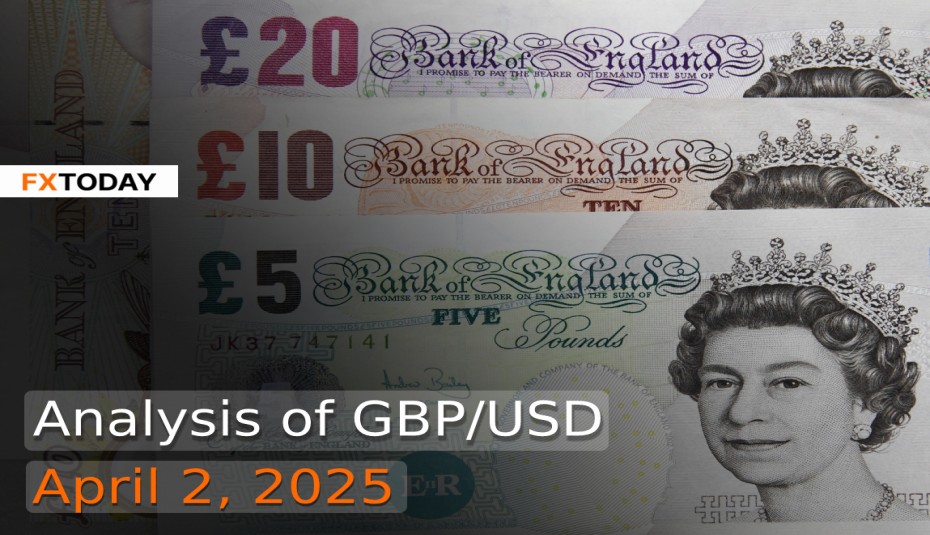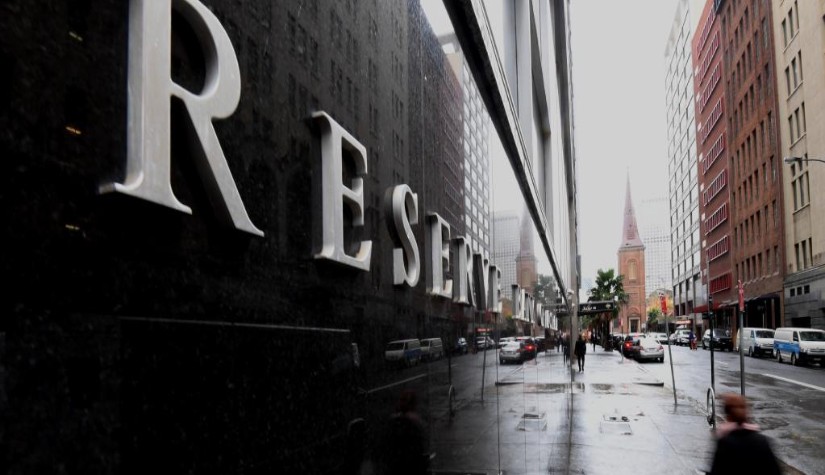UK Economy Grows Modestly; GBP/USD Likely to Remain Under Pressure
Britain’s economy grew by 0.1% in Q4 2024, as expected, with modest gains in services and construction offset by a decline in production. Real GDP growth for 2024 was revised up to 1.1%, but GDP per capita declined, signaling a technical recession. Households continued accumulating record savings amid stagnation concerns.
The OBR halved its 2025 GDP growth forecast to 1% due to global uncertainty and rising borrowing costs, though growth is projected to recover to 1.9% in 2026 with monetary easing and lower energy prices. Inflation is forecast to average 3.2% in 2025, higher than prior estimates, with consumer prices up 2.8% in February. Economists warn of near-term inflation risks from energy costs and tax changes, potentially delaying BoE rate cuts.
Long-term inflation expectations rose to 4.2% in March, with short-term expectations reaching 4.0%. Despite inflation easing to 2.8% in February, the BoE anticipates a rebound to 3.75% this year, delaying its 2% target until late 2027.
Job vacancies saw their fastest monthly growth in three years, but hiring remained weak. Slower pay growth reinforced BoE expectations for rate cuts. Business confidence stayed steady in March, supported by retail strength. Retail sales rose 1% in February, defying expectations, though tax hikes and energy costs in April may dampen growth.
The services sector showed signs of recovery in March, with PMI reaching a seven-month high. However, manufacturing PMI fell to an 18-month low, hit by U.S. tariff threats. British manufacturers faced headwinds from impending U.S. tariffs and domestic tax hikes, leading to a sharp export decline.
Meanwhile, mortgage approvals dropped to a six-month low in February as buyers braced for higher transaction taxes. House prices rose 4.9% annually in January, the fastest in two years, but growth stalled in March after stamp duty relief ended. Private-sector rents climbed 8.1% in February, though at a slower pace than in January.
Britain is bracing for economic fallout from U.S. President Donald Trump’s new tariffs on aluminum, steel, automobiles, and Chinese imports, set for April 2. Prime Minister Keir Starmer’s government is negotiating with the U.S. to mitigate the impact, though immediate retaliation is unlikely.
Finance Minister Rachel Reeves reaffirmed Britain’s stance against escalating trade disputes. Given the UK’s trade surplus with the U.S. in goods and services, officials are also pursuing a tech-focused trade agreement.
The OBR warned that Trump’s tariff strategy could shrink the UK economy by up to 1%, wiping out fiscal headroom. A 20-percentage-point tariff hike on all U.S. trade partners could lead to a significant contraction by 2026-27, raising import costs and hurting UK exports. Even limited tariffs on China, Canada, and Mexico could shrink Britain’s GDP by 0.2%.
In response to economic pressures, Reeves announced spending cuts and a downward revision of growth forecasts. The UK expects to borrow £47.6 billion more by 2030, though lower-than-expected bond issuance in 2025/26 reassured investors. Rising employer taxes are expected to slow wage growth and economic recovery.
The U.S. dollar is expected to stabilize despite uncertainty over Trump’s trade policies. Traders are reducing long-dollar positions, anticipating Fed rate cuts. U.S. job openings fell in February, while construction spending rose. Analysts warn tariffs could weaken hiring and business confidence, heightening recession risks. Financial markets indicate short-term inflation concerns from tariffs. Inflation swaps suggest a temporary price spike, though expectations point to a decline as recession fears grow.
Chicago Fed President Austan Goolsbee noted that while economic data remains strong, tariffs could fuel inflation or slow growth. With Trump’s tariffs looming, market volatility and inflation concerns are likely to persist, keeping the Fed cautious on rate adjustments.
As a result, GBP/USD is likely to face continued downward pressure in the near term as UK economic uncertainty persists. In the near term, we might see GBP/USD fluctuate within a range as the market adjusts to these economic developments. A potential test of lower levels around 1.27–1.28 is possible if the UK’s growth forecasts are downgraded further or if inflation remains stubbornly high. However, if the UK manages to avoid a deeper recession or if the services sector continues to show resilience, the GBP could hold steady or even rally back towards 1.30 in the short term. Market reactions to tariffs and the Fed’s policies will be crucial in determining the direction in the coming weeks. However, if global inflation concerns persist, the USD might benefit as a safe haven.
Data for Technical Analysis (1D) CFD GBP/USD
Resistance : 1.2937, 1.2952, 1.2975
Support : 1.2891, 1.2876, 1.2853
1D Outlook
Source: TradingView
Buy/Long 1 If the support at the price range 1.2856 - 1.2891 is touched, but the support at 1.2891 cannot be broken, the TP may be set around 1.2948 and the SL around 1.2839, or up to the risk appetite.
Buy/Long 2 If the resistance can be broken at the price range of 1.2937 - 1.2972, TP may be set around 1.3009 and SL around 1.2874, or up to the risk appetite.
Sell/Short 1 If the resistance at the price range 1.2937 - 1.2972 is touched, but the resistance at 1.2937 cannot be broken, the TP may be set around 1.2887 and the SL around 1.2989, or up to the risk appetite.
Sell/Short 2 If the support can be broken at the price range of 1.2856 - 1.2891, TP may be set around 1.2814 and SL around 1.2954, or up to the risk appetite.
Pivot Points Apr 2, 2025 02:55AM GMT
|
Name
|
S3
|
S2
|
S1
|
Pivot Points
|
R1
|
R2
|
R3
|
|---|---|---|---|---|---|---|---|
| Classic | 1.2826 | 1.2853 | 1.2887 | 1.2914 | 1.2948 | 1.2975 | 1.3009 |
| Fibonacci | 1.2853 | 1.2876 | 1.2891 | 1.2914 | 1.2937 | 1.2952 | 1.2975 |
| Camarilla | 1.2905 | 1.2911 | 1.2916 | 1.2914 | 1.2928 | 1.2933 | 1.2939 |
| Woodie's | 1.283 | 1.2855 | 1.2891 | 1.2916 | 1.2952 | 1.2977 | 1.3013 |
| DeMark's | - | - | 1.2901 | 1.2921 | 1.2962 | - | - |
Sources: Investing 1, Investing 2
















